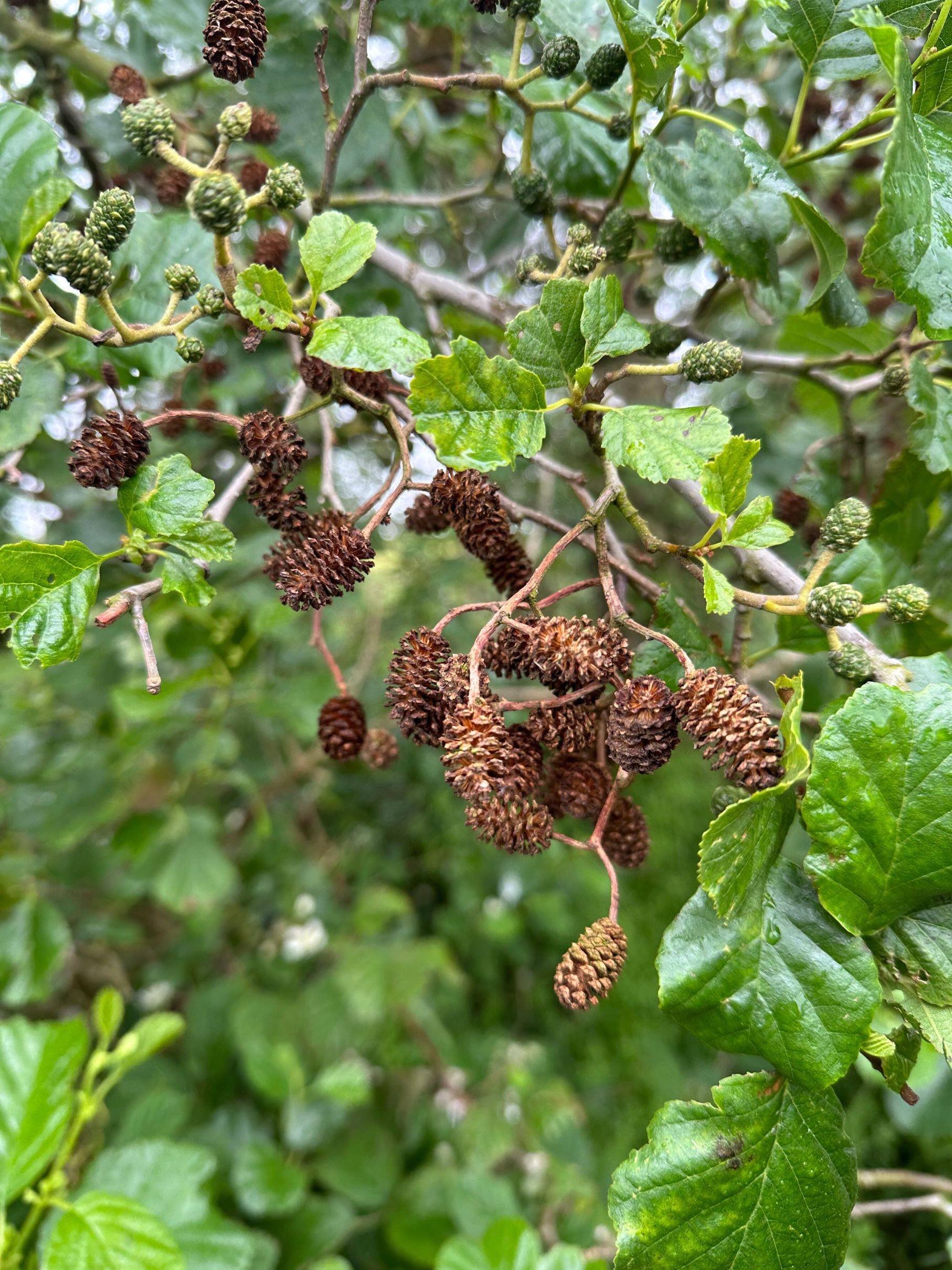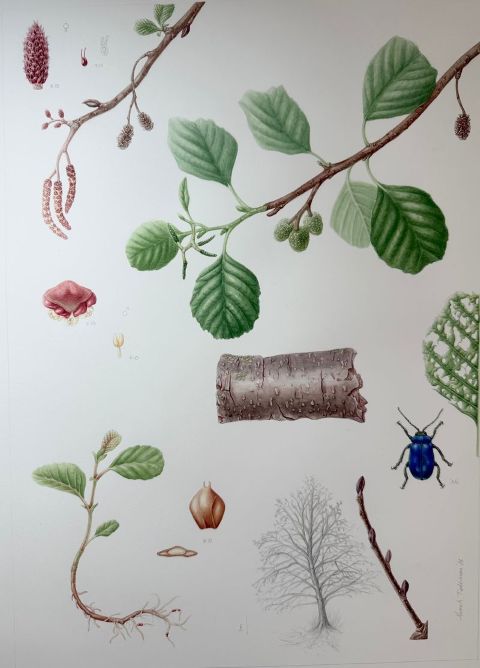Science Meets Art – how the ATI benefits illustrators and scientists alike
Hannah Tiedeman, 05/11/2025
You might imagine botanical illustration as a peaceful, contemplative activity - spent indoors, cat purring nearby, endless cups of tea, and a soothing audiobook in the background. And yes, sometimes it is. But what many people don’t realise is how much time illustrators spend outdoors; closely observing plants in their natural habitat, (legally) collecting samples for pressing, and studying the broader ecology. Botanical illustrators are not only artists but also field researchers. Their work captures scientifically important details, preserves a visual record of species, and offers a moment-in-time snapshot that can prove invaluable to science and conservation.
As part of my diploma, I was asked to select a native tree to study throughout the course. At the time, my knowledge of trees was admittedly limited, but I was drawn to the female pseudocones of Alnus glutinosa - the common Alder - which I’d noticed on riverside walks. Gloucestershire has a rich network of waterways, which provide the perfect habitat for Alder. This moisture-loving tree helps stabilise riverbanks and supports a wealth of other species within wetland ecosystems.
In my local area, many of the Alder trees are coppiced regularly, which results in impressively large leaves but few reproductive structures. I optimistically bought a young Alder specimen to study, hoping it would eventually produce both male and female flowers (Alders are monoecious). However, with course deadlines looming, I realised I needed to find mature specimens.
That’s when I turned to the Woodland Trust website and discovered the Ancient Tree Inventory (ATI). Thanks to the generosity and knowledge of the ATI’s volunteer verifiers, I was able to locate and visit several ancient and notable Alder trees across Gloucestershire. These visits became essential to my study and sketching process.

a great ancient alder tree

dried female catkins on an alder tree branch
The value of this open data source can’t be overstated. It allowed me to compare and contrast trees of different ages and conditions, helping me identify which characteristics were consistent and scientifically significant. With my ‘shortlist’ of trees identified, I returned to observe them throughout the seasons - particularly important with Alder, as its reproductive structures change dramatically over the year. The tiny female flowers develop into woody pseudocones, which often remain on the tree well into the next growing season, and the male catkins shift from upright green to pendulous red-green structures revealing the butter-yellow pollen.
While observing, it was impossible not to notice the presence of Agelastica alni, the alder leaf beetle. These striking, metallic-blue beetles feed on Alder leaves and are now widespread in the UK. I knew I wanted to include them as part of my ecological studies.
After many hours of work in graphite, ink, and watercolour, I produced a finished scientific plate, which is now featured in this year’s Margaret Flockton Award Exhibition - a fantastic showcase for anyone with a passion for plants and illustration. Held annually at the Botanic Gardens of Sydney, the exhibition celebrates the unique role that botanical illustration plays in bridging art and science.

Final scientific plate in graphite

Coloured illustrations of the alder tree's anatomy and the alder leaf beetle
Final Thoughts
Studying the Alder over a full year was not only a technical challenge but also an opportunity to connect deeply with a native species and its environment. The support of open-access tools like the ATI and the incredible work of organisations like the Woodland Trust are invaluable to artists, scientists, and conservationists alike.
Hannah Tiedeman is a botanical illustrator based in Gloucestershire who has recently completed her Diploma in Botanical Illustration with the Royal Botanic Garden Edinburgh (RBGE). She also paints for the Oxford Florilegium, creating detailed illustrations of plants from the University’s Botanic Garden and University Parks for the historical archives. To see more of her work, please visit her Instagram page: @hannah_tiedeman_illustrator
